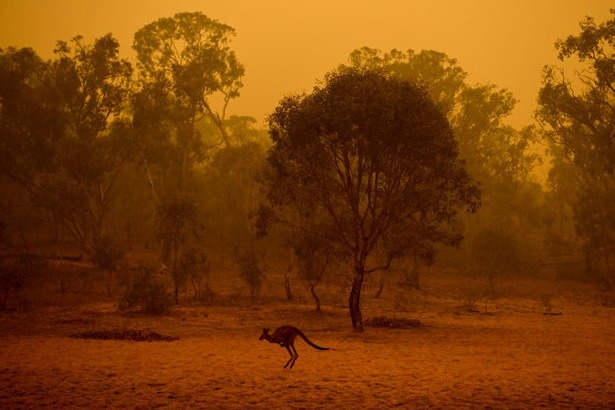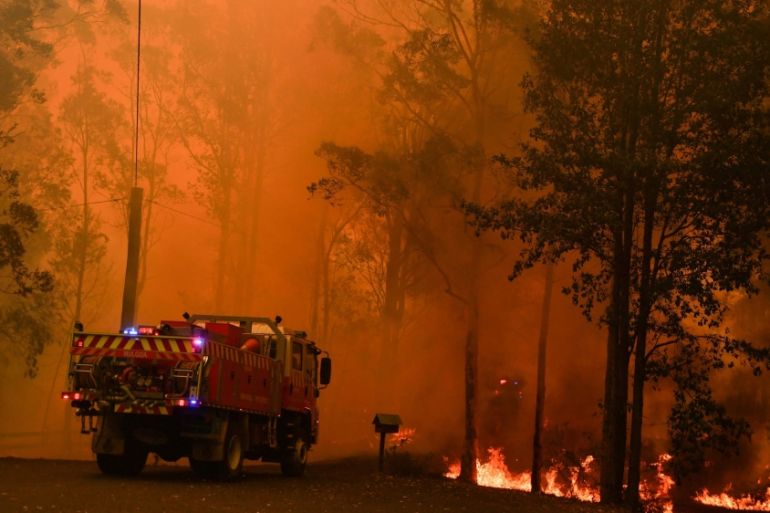The Value of Bushfire Administration in Fire Security
In the world of fire defense, the value of effective bushfire administration can not be downplayed. As neighborhoods around the world face boosting circumstances of wildfires, the aggressive approach to stop and minimizing these all-natural calamities through tactical bushfire administration methods has become an important aspect. Past the prompt risk to human life and residential property, the interaction between bushfire administration and eco-friendly conservation, area participation, and environment adjustment positions intricate challenges that demand detailed services.
Value of Proactive Bushfire Avoidance
Positive bushfire avoidance techniques are important in mitigating the ruining influences of wildfires on ecological communities and neighborhoods. One vital element of aggressive bushfire prevention is fuel management.
Furthermore, developing firebreaks - cleared locations where greenery is purposefully removed to produce an obstacle to quit the progress or slow down of a bushfire - is an additional important aggressive measure. By carrying out these approaches, the spread of wildfires can be limited, securing both human lives and the setting. Furthermore, educating the public on fire security practices and promoting neighborhood understanding regarding the significance of bushfire prevention are essential components of positive approaches. Inevitably, positive bushfire prevention plays a significant duty in securing communities and communities from the damaging influences of wildfires.
Role of Neighborhood Engagement in Fire Security
Engaging the area in fire protection initiatives is essential to boosting the efficiency of proactive bushfire prevention strategies. Area engagement plays an essential duty in promoting a cumulative understanding of the dangers posed by bushfires and the value of readiness steps. By including regional homeowners, authorities can disseminate crucial details on fire security techniques, discharge procedures, and early caution systems, encouraging individuals to take positive actions to protect their lives and properties.
By promoting a culture of preparedness and collaboration, communities can enhance their ability to respond efficiently to bushfire emergency situations, minimizing the impact on residential properties and lives. Ultimately, area involvement is a foundation of extensive fire protection strategies, stressing the value of collective action in guarding prone areas from the hazard of bushfires.
Relevance of Wildlife Preservation in Bushfire Monitoring
Preservation of wild animals plays a critical duty in efficient bushfire administration techniques, making certain the defense of varied ecological communities and biodiversity in fire-prone areas. Wildlife conservation is important as it adds to the total strength of communities, helping in their capability to hold up against and recoup from the impact of bushfires. By saving environments and safeguarding different varieties, the natural equilibrium within these communities is preserved, which is important for their lasting health and sustainability.
Moreover, wild animals preservation also assists in reducing the danger and strength of bushfires. Healthy environments with unspoiled wildlife populations can function as all-natural firebreaks, slowing down the spread of fires and limiting their harmful potential (Bushfire Risk). Certain pet species, like delving animals or birds that spread out seeds, play special roles in helping or stopping fires in the post-fire regeneration of environments
Integrating wild animals conservation into bushfire monitoring approaches is not only crucial for securing biodiversity however likewise for advertising the overall wellness and durability of environments when faced with boosting fire risks.
Benefits of Strategic Fuel Decrease Programs
Tactically implementing fuel reduction programs is vital in minimizing the risk and effect of bushfires in fire-prone areas. These have a peek at this site programs include controlled burning, mechanical cleaning, and other methods to reduce the amount of flammable greenery readily available to sustain wildfires. By tactically decreasing fuel lots in crucial locations, such as close to property neighborhoods or vital infrastructure, the intensity and spread of bushfires can be dramatically reduced.
One of the key benefits of gas reduction programs is the enhancement of total fire strength in an ecological community. By developing calculated fuel breaks and reducing the connection of greenery, these programs help to disrupt the path of a bushfire, making it easier for firefighters to snuff out the blaze and include. Additionally, fuel reduction programs can safeguard biodiversity by preventing excessively extreme fires that can ruin environments and endanger wild animals populaces.
In addition, these programs can also guard human lives and home by lowering the risk of devastating fires that position a substantial threat to neighborhoods. Ultimately, tactical fuel decrease programs play a critical duty in look here aggressive bushfire monitoring and cultivating a safer environment for both people and nature.
Influence of Environment Change on Bushfire Danger

Higher temperatures cause drier greenery, making it a lot more susceptible to ignition. Decreased rains in certain regions lengthens dry spell conditions, better increasing the flammability of the landscape. Furthermore, the transforming climate has actually modified wind patterns and atmospheric problems, causing more unpredictable fire behavior and quick fire spread.
As the climate remains to transform, the frequency and strength of bushfires are expected to rise, demanding a positive and adaptive approach to bushfire administration. Strategies need to develop to make up the transforming danger landscape, incorporating climate estimates and taking into consideration long-lasting strength in fire administration planning. Attending to the influence of climate modification on bushfire danger is essential in creating effective techniques to secure lives, property, and the atmosphere.
Conclusion
Finally, positive bushfire avoidance, area involvement, wild animals conservation, critical gas reduction programs, and consideration of climate modification are important parts in efficient fire protection. By carrying out these methods, we can better manage bushfire risks and protect both human lives and the environment. BAL Assessment. It is crucial that stakeholders collaborate to look at these guys prioritize these actions to lessen the damaging influence of bushfires on ecological communities and communities

As the climate continues to alter, the frequency and intensity of bushfires are expected to rise, necessitating a adaptive and positive technique to bushfire administration.In verdict, proactive bushfire prevention, community interaction, wild animals preservation, tactical fuel decrease programs, and factor to consider of environment change are critical components in efficient fire security.